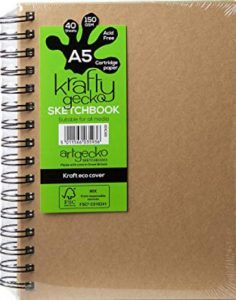Learners Get A Blank Workbook
 Learners Get A Blank Workbook
Learners Get A Blank Workbook
As trainers, we know that it makes sense to provide workbooks for our learners to make their own notes. But, the investment needed is quite high – not only from a monetary perspective.
Workbooks can be:
- Very time consuming to design and keep updated
- Often constrained by corporate branding
- Expenses to have them printed and bound
- Difficult to justify to management who only want to provide digital copies (which become more of a manual than a workbook)
- Difficult to distribute for webinars, eLearning and digital lessons
- Very time consuming to design and keep updated
- Often constrained by corporate branding
- Expenses to have them printed and bound
- Difficult to justify to management who only want to provide digital copies (which become more of a manual than a workbook)
- Difficult to distribute for webinars, eLearning and digital lessons
…Etc
So we have been experimenting with offering our learners a blank A5 notebook instead – and it’s a great success with our learners. Here’s what we do so that you can try it for your workshops.
 What You’ll Need
What You’ll Need
- One A5 notebook per learner, wrapping etc removed
- One A5 notebook per learner, wrapping etc removed
Depending upon the type of workshop, you can select:
- lined or plain paper
- Recycled, eco-friendly paper
- With dividers or without
- White paper or brown acid free paper (or other types of paper)
- Paper sourced from sustainable forests and FSC certified
- Lined or plain paper
- Recycled, eco-friendly paper
- With dividers or without
- White paper or brown acid free paper (or other types of paper)
- Paper sourced from sustainable forests and FSC certified
… Etc There is plenty of choice from on-line stationery suppliers.
When Learners Arrive
As learners arrive, we ask them to sign-in and then present them with their own workbook. As we offer them their workbook we say,
Here is your workshop workbook
Of course, because it’s not what they’re expecting, the first thing they do is look inside – and it’s blank. This always gets a bemused look and a sort of laugh. But what we have found is that it’s a starting point for learners to start speaking with each other.
We say nothing about their workbook at this point.
 During The Workshop
During The Workshop
After your workshop opening ask learners to:
- Open their workbook at the first page
- Customise that page to reflect the workshop. They can do this either portrait or landscape.
- Allow 4-6 minutes
- Form pairs with someone not in their team
- Share/explain their customisation
- Open their workbook at the first page
- Customise that page to reflect the workshop. They can do this either portrait or landscape.
- Allow 4-6 minutes
- Form pairs with someone not in their team
- Share/explain their customisation
Still within their pairs, ask, “What’s the purpose of giving you a blank workbook?” and allow pairs time to discuss. After that, ask a few pairs their thoughts.
- We tend to get thoughts such as:
- You want us to be open to new ideas ie blank pages like the workbook
- You want us to be creative
- We can make notes that are personal to us
- You wanted to suprise us
- We can make notes when we want
- You want us to be open to new ideas ie blank pages like the workbook
- You want us to be creative
- We can make notes that are personal to us
- You wanted to suprise us
- We can make notes when we want
Etc
Agree and add the content of the workshop to them as examples eg …
with ‘You want us to be creative’, you could say “Yes, just like when you are (use the workshop subject here eg a manager, using Excel, managing your time, troubleshooting etc) sometimes you need to be creative, but to be able to be creative, you will need a solid foundation …”.
Then you can conclude by saying something like:
The essence of this workshop is to give you the skills and knowledge that will help you in your working role. Instead of me giving you a 350-page manual that you will probably never open let alone read, I suggest you create your own SUPPORT material. What I am asking from you during your workshop is that you are fully active, participative and collaborative. For that we will take the time to ….
After each module/topic
- Allow a few minutes for learners to make or complete notes in their workbook. Encourage drawing and colour as well as just writing.
After lunch and at the end of the day ask learners to:
- Turn to the back of their workbook
- Turn it up-side-down
- Add their three key things from the morning
- Allow 3 or 4 minutes
- Partner up with someone not in their team
- Share their key ideas and add how and where they would use it in their everyday work
This can be repeated at the end of the day.
By doing this, learners are creating a rolling action plan that can be used at the end of the workshop to select the first thing they will apply back in their workplace ie their immediate action plan.
Resources
Amazon has a great selection of notebooks, but I’m sure you have your own preferences for sourcing these. To get you started, here are the links to the notebooks we have recently used.
Brown with dividers – Click here
Plain paper sourced from sustainable forests and FSC certified – Click here
nb – we have no vested interest in these products nor in Amazon. They are the Notebooks that we have used in the past that have worked for us. There are plenty to choose from. Take your time and select the best notebook for your learners from the supplier of your choice.
Call to action |
|---|
| Get your learners making notes that are useful to them. Next time you have a workbook to design, consider this idea. It works well for synchronous and well as asynchronous training. |


Leave a Reply